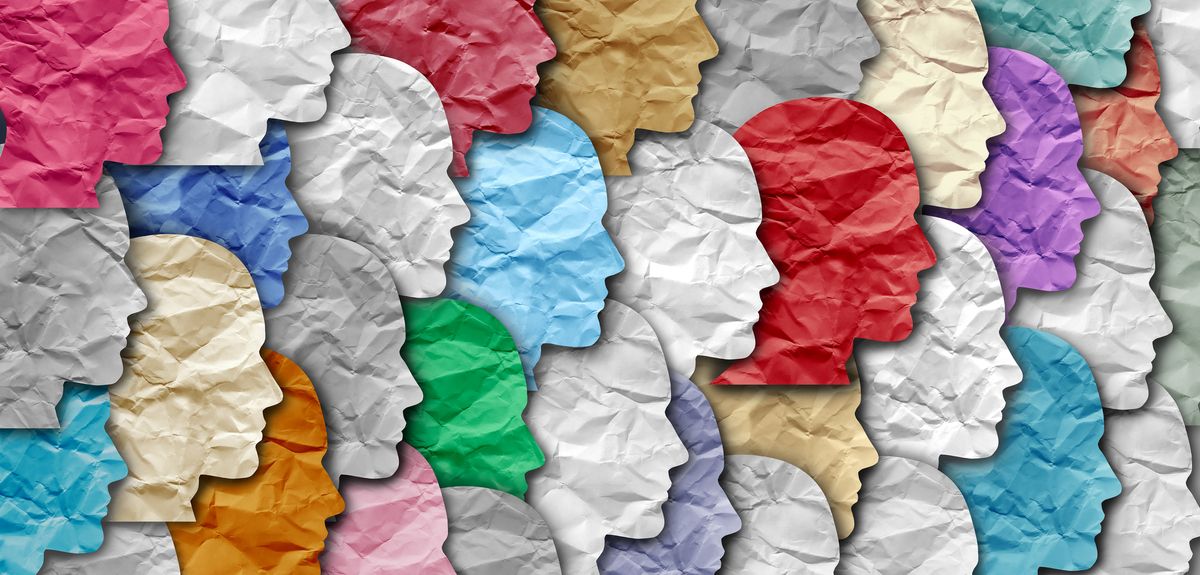
Image credit: Shutterstock
Intertwined: Our perception of ourselves and others
By Dr Marco Wittman, Department of Experimental Psychology
Have you ever played team sports? Picture how it felt when your team succeeded. You probably think the whole team performed well and everyone contributed to the win. Indeed, being part of a well-performing team can make us feel more capable ourselves. But if the team performs poorly, we can feel less competent than we actually are. In fact, this phenomenon is one that we discovered a few years ago called self-other-mergence.
One reason why self-other-mergence is such an interesting phenomenon is that we can link it to a very specific region in prefrontal cortex. The prefrontal cortex is the part of our brain that is responsible for higher cognitive functions such as learning, conceptual thinking and decision making.
In neuroscience, we know a lot about how we perceive and value objects in the world, like money, food, etc. We know much less about how the brain perceives other people and how it perceives relationships between others and ourselves. Self-other-mergence offers a unique window into this process. It might even tell us something about what our “social default” is. Do we naturally see ourselves and others as separate individuals – or is our default predisposition to have an integrated sense of self and other? This is the question we asked in our new study.
But first things first. What exactly is self-other-mergence? Self-other-mergence means people derive an impression of their own abilities not just from their own performance. Instead, they also integrate how well other people are doing into their self-evaluation. How others make us feel about our own abilities – such as better or worse – depends on the type relationship we have with them in terms of whether we are cooperating or competing with them. We align our sense of our ability to the performance of our teammates (our cooperators).
By contrast, we overestimate the difference between us and competitors: we perceive competitors such as the opposing team as particularly strong if they are winning and underestimate their ability when they are losing.
In our study, participants were asked to play a game on a computer while lying in a neuroimaging scanner that measured their brain activity. They played rapid, simple games by pressing buttons and received feedback about how well they were doing and how well others were doing. This allowed them to learn over time about the performance levels of each player. Participants then indicated how well they expected everyone to perform in the future.
As experimenters, we knew exactly how well each player performed at each point in the experiment, and by using mathematical models, we could see self-other-mergence in the data. Interestingly, the participants naturally integrated some information about the performance of the other player into their self-image. This self-other-mergence effect is quite small, but very significant and replicates over several studies.
The key innovation of our study is that we used brain stimulation to find out how the prefrontal cortex is important for self-other-mergence. We used a brain stimulation protocol that is well known to be safe and that has no longer-term side effects. But it is able to disrupt brain activity for a short period of time. By applying brain stimulation over the prefrontal cortex while participants were in the brain scanner, we could simultaneously measure the effect of brain stimulation 1) on activity in the prefrontal cortex and 2) on the strength of the self-other-mergence effects in behaviour. This was critical for us, because it allowed us to ask how the prefrontal cortex is important for self-other-mergence. There were two possible hypotheses.
Our first hypothesis was that activity in the prefrontal cortex might be responsible for causing self-other-mergence in the same way that activity in visual parts of the brain may cause us to see visual stimuli such as faces or houses. Our alternative hypothesis was that activity in the prefrontal cortex might be important for suppressing an even higher degree of self-other-mergence, similar to the way that activity in other brain regions might be important for maintaining self-control and ensuring we do not reach out for tasty snacks when we are on a diet. Which of the two was it? Did activity in the prefrontal cortex cause or suppress self-other-mergence?
After brain stimulation, the neural signatures of self-other-mergence were no longer visible in the prefrontal cortex. This is what we expected to happen. But what we also found is that when neural activity in the prefrontal cortex is disrupted, self-other-mergence behaviour happened even more – people were even more likely than before to merge estimates of their own and the other players’ performances together.
Another way of describing this is that silencing self-other-mergence in the brain significantly increases the self-other-mergence behaviour.
This indicates that our second hypothesis was the correct one: the prefrontal cortex is indeed important for suppressing self-other-mergence rather than causing it. This means we have a natural tendency to merge self and other representations in the brain. Activity in the prefrontal cortex is critical for suppressing this mix-up and allowing us to have separate images of oneself and other people.
Our results suggest that we as humans are very social creatures indeed. We naturally have a contextually embedded and integrated sense of ourselves and others. Our estimates of the abilities of ourselves and others that are inherently interdependent. Activity in the prefrontal cortex serves to keep them separate to ensure a correctly calibrated sense of self.